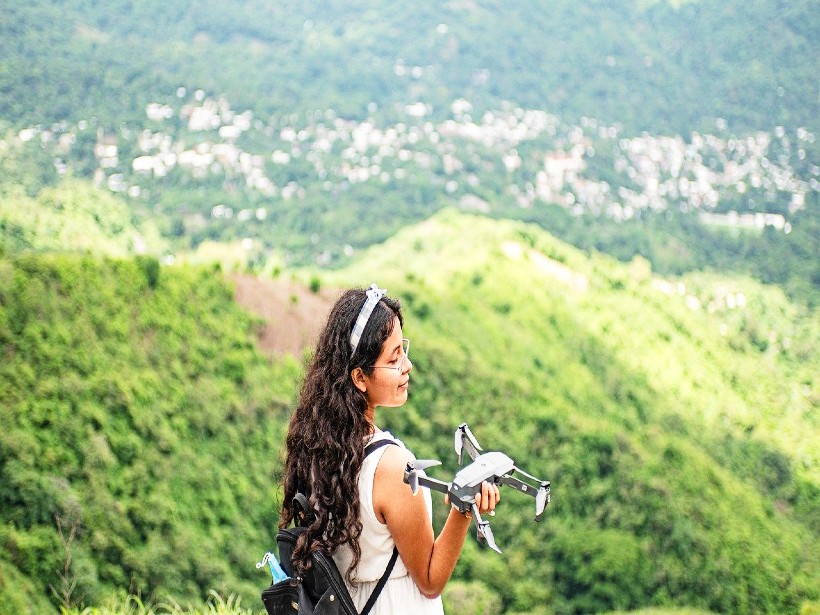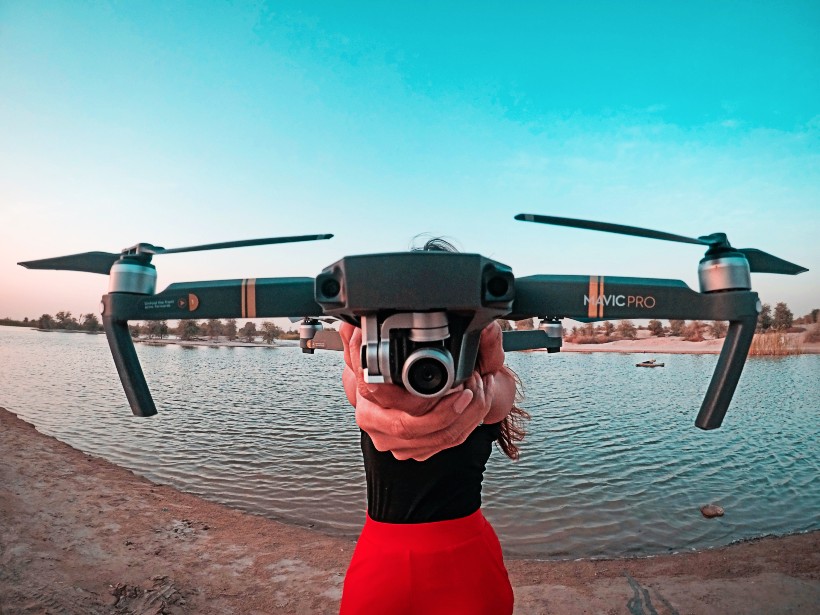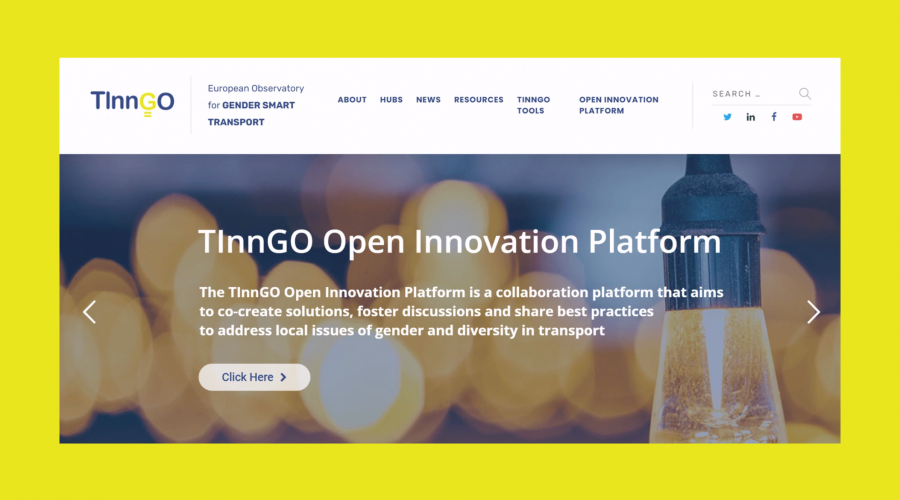Drone technology development is accelerating and creating new sustainable solutions for future smart mobility (Chiang et al., 2019). Until now, drones have been used in logistics, military, disaster relief and emergency services, engineering, delivery of healthcare, film and video recording, agriculture, or medicine (e.g. epidemiology for research and tracking disease spread).
Given the expanding array of potential drone applications, how are we to think about gender and drones? Could drone technology address women’s mobility needs?
Delivery and smart city
Women deal with the majority of domestic deliveries, household and food shopping. Existing mobility challenges include multimodal journeys in which shopping – specifically in rural areas – remains a significant and time consuming burden. Moreover, the elderly or persons with disabilities face mobility difficulties and make fewer trips than the general population. These and other factors can tangibly influence future drone designs and drive innovation in health care logistics or domestic delivery. In countries with insufficient road infrastructure or where rainfall may cut off traditional transport routes, air delivery can transport maternal health supplies and commodities, saving lives of women and newborn babies.
There are many benefits to air delivery. Drones can fly over congested streets and take the fastest routes over buildings and other obstacles. They can deliver to remote rural areas that cars can’t reach efficiently. This could be the future for e-commerce companies, including technology giants like Amazon (Amazon Prime Air), Google, and Tesco. Drone delivery can supply food, commercial goods, medicine, or postal delivery. The by-product of replacing traditional vehicle delivery with air devices will be fewer cars, decreases in traffic and in pollution. In other words, air logistics could contribute to the emergence of cleaner, more liveable cities. Indeed, with drones being highly sustainable, there is a strong argument for future smart cities to embrace drone technologies to connect people and services (Nguyen Dinh et al., 2018).
Climate Change
A United Nations report concludes that climate change and extreme weather conditions affect women more than men. That is because women, especially in the Global South, are more likely to live in poverty, have less access to human rights or health care, be more reliant on small scale traditional agriculture and be more oppressed by systemic violence. Drones can serve at the forefront of global warming and extreme weather events. For example, by fighting fires, or being deployed in rescue or humanitarian missions. Drones can be sent by emergency services to inspect essential infrastructure in the immediate aftermath of a disaster, as well as for ongoing mapping of coastlines and flood-prone areas and inform evacuation planning. Additionally, drones could play a critical role in helping scientists to tackle climate change. Drones can assist ecologists and biologists in tracking environmental degradation, especially in vast, unpopulated areas. Aerial research assistants, equipped with AI and other technological advancement, can collect samples from remote areas quickly and efficiently reducing the mortality risk of human field researchers. Moreover, to tackle deforestation these air devices are being used to plant seeds and expand forest areas. By combining technology, software, and ecological science, drones not only outperform traditional tree-planting and work 10 times faster than humans – they also cost around 80% less.
Safety and security
With opportunities, come also challenges. Although urban acceptance for air drone traffic is quite high, there is significantly low acceptance in residential areas (Tan et al., 2021), which brings us to privacy issues. Studies indicates that privacy remains a concern, particularly from drones that can capture imagery, particularly those that are used close to private personal space such as homes and apartments (Daly 2017, Aydin 2019). The thread of drone privacy invasion is specifically relevant to women (Thomasen, 2017). Media reported on stories of sunbathing women being photographed or harassed by aerial devices or ex-girlfriends being stalked and followed. Sadly, the new technology now not only allows perpetrators to stalk victims, but also to avoid restrictions imposed by restraining orders.
Moreover, some past incidents show that unrestricted drone use can inflict problems on other airspace users like airports and emergency services. For example, the closure of the Gatwick Airport in December 2019 was cause by two unmanned aerial vehicles close to the world’s busiest runway for 33 hours – cancelling 1,000 flights and disrupting the travel plans of 150,000 travellers; costing airlines around £50 m in lost revenue and passenger care costs.

Legislation
It seems that legislation around drone usage is another pressing problem. Regulations regarding commercial, industrial, and private drones are continuously evolving and are not currently harmonized across the world. Study into existing drone regulation concluded that many methods are reactive or defensive. Instead, more proactive and preventative methods of drone management would be warranted (Markert&Bushell, 2020). To implement some of the preventative methods, Internet of Drones could be an answer and very possible in the future (Gharibi et al, 2016). However, more research is needed to test connectivity performance that can be provided by terrestrial mobile networks.
Drone Gender Gap
Currently, there is a lack of research on gender and drones or gender disaggregated data on drone perception and usage, especially on the large scale. However, it is already known that the drone industry is reflective of the gender disparity replicated from STEM field: science, technology, engineering and mathematic (ITF, 2021, p. 33). The Drone Gender Gap is already widely discussed in the industry. Women are underrepresented at every stage of the pipeline, from design, manufacturing, operations to end users. Networks such as Women Who Drone, are seeking to place more women into drone industry positions as well as empowering girls to learn more about these new devices and change perception of drones as masculine and intimidating.
The wide spectrum of the possible application of drones brings up many questions, in different gender and diversity contexts, that are open for research and design exploration. The drone industry is yet at its infancy – therefore it is the best time to reflect the needs of traditionally underrepresented groups (women, ethnic minority, elderly, rural communities) in design, manufacturing and operations.
The TInnGO design team works collaboratively with designers and young talents on new design concepts. We focus on smart mobility solutions – like drones – that are open to public discussion and welcomes inputs from different audience. By encouraging co-design activities, building around users’ experience (user-centred design), particularly of excluded or marginalised groups, we hope to facilitate an inclusive co-creative platform to communicate design ideas. We believe that by developing inclusive and gender sensitive mobility options we have an opportunity to alleviate social challenges entrenched in decades of systemic barriers.
References:
- Chiang, Wen-Chyuan, et al. “Impact of drone delivery on sustainability and cost: Realizing the UAV potential through vehicle routing optimization.” Applied energy 242 (2019): 1164-1175.
- Dung, Nguyen Dinh, and Jozsef Rohacs. “The drone-following models in smart cities.” 2018 IEEE 59th international scientific conference on power and electrical engineering of Riga Technical University (RTUCON). IEEE, 2018.
- Gharibi, Mirmojtaba, Raouf Boutaba, and Steven L. Waslander. “Internet of drones.” IEEE Access 4 (2016): 1148-1162.
- ITF (2021), “Transport Innovation for Sustainable Development: A Gender Perspective”, OECD Publishing, Paris
- Merkert, Rico, and James Bushell. “Managing the drone revolution: A systematic literature review into the current use of airborne drones and future strategic directions for their effective control.” Journal of air transport management 89 (2020): 101929.
- Rosser Jr, James C., et al. “Surgical and medical applications of drones: A comprehensive review.” JSLS: Journal of the Society of Laparoendoscopic Surgeons 22.3 (2018).
- Tan, Lynn Kai Lin, et al. “Public acceptance of drone applications in a highly urbanized environment.” Technology in Society 64 (2021): 101462.
- Thomasen, Kristen. “Beyond airspace safety: A feminist perspective on drone privacy regulation.” (2017).





